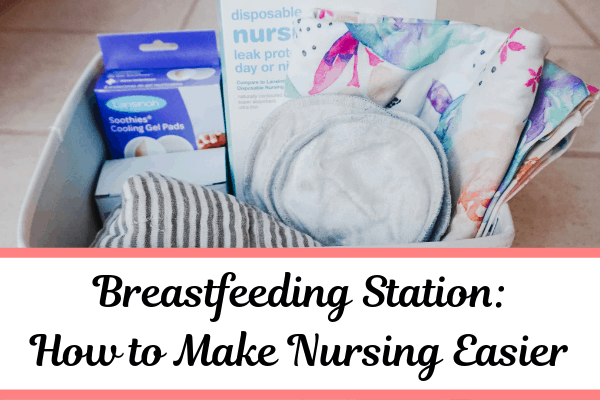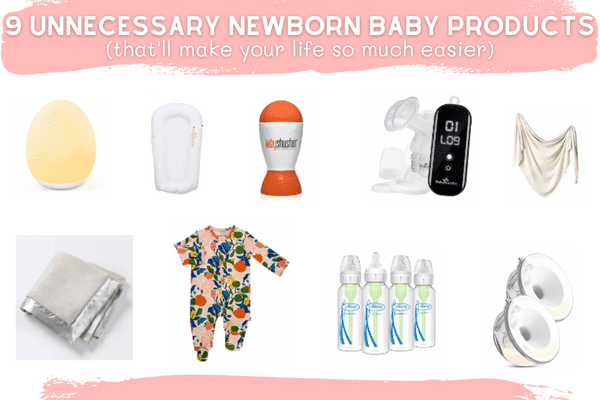Breastfeeding Supply & Demand: How it Really Works!
Disclosure: This post may contain affiliate links, which means I may receive a small commission if you click a link and purchase something. Please check out my disclosure policy for more details. All opinions are my own!

Let’s get real. To any mom who’s ever breastfed, at least initially, it’s anything but simple.
You think you’re doing this breastfeeding thing right, but then you’re totally stumped at how it actually works. Which is why you’re here! 🙂
Thankfully, even if the whole breastfeeding thing feels complicated for you, for your body – it’s simple.
The basics of breastfeeding all lie in one thing – supply and demand.
If you’re hoping to increase your supply or even just understand breastfeeding better – you need to know the basics. As an RN who’s worked in labor and delivery, I can’t tell you how important this concept is.
Don't have time to make it to an in-person breastfeeding class?
Milkology's Online Breastfeeding Course will teach you to breastfeed like a pro in 90 minutes and is one of the best priced courses online.
Breastfeeding Supply & Demand
Okay, so let’s get to it! How does this whole breastfeeding supply and demand really work?
In order for your body to be able to make more breast milk, something has to stimulate it.
At the initial start of breastfeeding at birth, or lack thereof, your body creates milk due to the different hormones in your body.
This is the ONLY time your body will make milk without some sort of “demand”.
Your body cannot and will not just make breast milk on its own after this point.
This is why, if you choose not to breastfeed, after your milk has gone away initially, it shouldn’t come back.
According to KellyMom, this is also why, if you choose to breastfeed and it gets difficult (and you still want to do it), you shouldn’t give up or skip a feeding. If you do this, you’re to your body to make less milk.
When your baby is breastfeeding, regardless of how much he or she is getting, they are creating a demand on your body. Your body then makes more milk to meet the demands of your baby.
If you want to make more milk, more demand must be created. And how do you do that?
Through an increased number of nursing/pumping sessions and length of time!
If that was a little bit difficult to understand, it’s okay. Let’s try this scenario to better understand supply and demand.

Supply & Demand: An Example of How Breastfeeding Really Works
Increase in Demand, Leads to Increase in Supply
Okay, let’s make this breastfeeding supply and demand concept even easier. Because I really want you to understand it inside and out!
Imagine you go to a lemonade stand for a refreshing drink. It’s hot and the line is down the street. The workers run out of lemonade, but know the line is long and that they should make more.
As a result, the children at the stand make more lemonade the next day to meet the needs of those in line. The children will continue making this increased amount of lemonade as long as the line continues to have the same number of people.
A baby may continue to nurse, even when the mother’s milk is empty. As a benefit to your body, this continued nursing causes the body to make more milk for the next time the baby eats.
Decrease in Demand, Leads to Decrease in Supply
Now imagine it’s a cold day and only 3 people go to the lemonade stand.
They make too much lemonade and have to throw some of it away. As a result, the children at the stand make less lemonade the next day to prevent wasting lemonade.
The children will continue making this decreased amount of lemonade as long as the line continues to have only a few people in it.
If a baby nurses less frequently or a mom does not pump as often as her baby would eat, the body believes that less milk is needed.
A pattern that continues like this will cause the mother’s milk supply to decrease. This is why it’s key to always make your pump “dates” with yourself.
Common Misconceptions Related to Breastfeeding Supply & Demand
1. If I wait longer to pump or nurse, I’ll have more milk.
It seems like it would make sense that if you wait longer to pump, there will be more milk to pump! Unfortunately – this isn’t true. 🙁
While it does take your body a little bit of time to make more milk – it doesn’t continue to make more and more and more.
By following what you learned about supply and demand you know that waiting to pump is only telling your body that your baby doesn’t need the milk.
So long story short:
Waiting too long to pump or breastfeed is telling your body to make less milk.
If you pump more often, or for longer, you are telling your body to make more milk.
If you’re looking for ways to increase your milk supply, check out 6 Ways to Increase Your Pumped Milk.
2. I don’t think my baby’s getting enough milk – I should supplement with formula and try again later.
When you feel like your baby isn’t getting enough milk, it’s only natural to want to give them formula and just try to breastfeed again later.
Unless otherwise directed by your doctor, this can cause problems with your milk supply.
If your baby needs more milk than you are producing, they need to keep trying to eat in order to stimulate your body to make more milk. In the early days your baby needs very little milk, their stomach is only the size of a marble!
The more your baby nurses and attempts to get milk, the more milk your body will produce. If you supplement frequently, without adding a pumping session, you should expect that your milk production will decrease.
What if my baby really isn’t getting enough milk and is hungry?
If you are concerned your baby isn’t getting enough, check with your doctor. A baby should have several wet and poopy diapers a day and be gaining weight.
If you don’t want to have to go to the clinic every time you want to have your baby weighed, be sure to use this easy trick:
Stand on the scale yourself, get your weight, then pick up your baby and stand on the scale again. The difference is your baby’s weight. This easy trick will help put your mind at ease if you just can’t help but wonder about your little one’s weight.
I really like the Etekcity Digital Body Scale. It reads your weight quickly and accurately, is digital, and sits at a really reasonable price. Amazon even ranks it as a best seller.

3. Once I return to work, I have to stop breastfeeding.
You definitely do NOT have to stop breastfeeding if you go back to work.
If you choose to stop, that’s totally okay!
But, if you want to keep nursing and giving your baby breast milk, it’s completely possible.
Just make sure you’re creating the same supply and demand schedule your baby would normally. If your baby is having a bottle at daycare at 10 am, try to pump at the same time at work.
If you notice you’re not getting as much from your pumping sessions as you’d like – try to add a pumping session into your day. If that’s still not doing the trick try the other methods in 6 Ways to Increase Your Pumped Milk and 4 Tips to Pump at Work Like a Pro.
Top Ways to Make Supply & Demand Work For YOU
After covering how breastfeeding supply and demand works, let’s talk about how to make it really work for you!
- Breastfeed or pump on demand. When your baby is hungry, don’t wait to feed him or her even if it hasn’t been 3 hours. Let them eat and allow your breast milk supply to increase due to their desire for more milk that day.
- Keep your pumping dates with yourself – it’s important for you to have time to relax and pump breast milk for your baby.
- Do your best to avoid supplementing if you’re able. This will help build your supply.
- If you want to increase your milk supply 100% naturally, add a pumping session to your day or during the night to create more demand.
- Keep track of your pumped milk by using a milk inventory log. This will not only save you time, but will save you many freezer trips to count your milk stash (sign up for the free log below!)
If you’re interested in an at home breastfeeding class – I recommend Milkology‘s class for only $19. The course is all online and is only 90 minutes total. You’ll learn a ton and feel so much more prepared to breastfeed!








